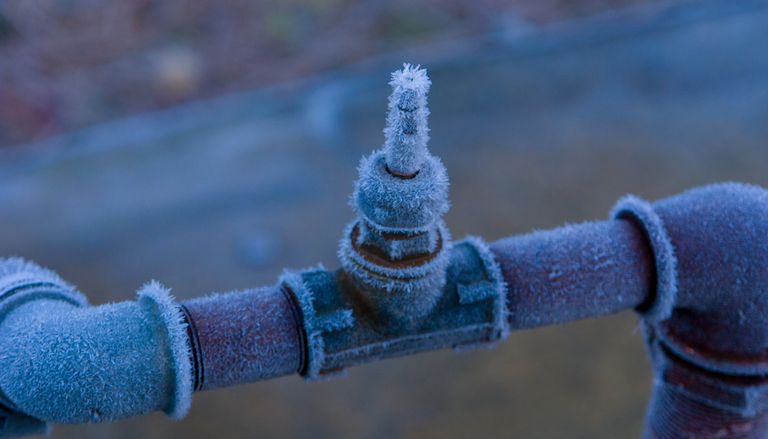Ways to Keep Pipes from Freezing Issues: Important Advice
Ways to Keep Pipes from Freezing Issues: Important Advice
Blog Article
Are you currently in search of advise concerning Helpful Tips to Prevent Frozen Pipes this Winter?

Cold weather can damage your plumbing, specifically by freezing pipes. Here's how to stop it from occurring and what to do if it does.
Introduction
As temperature levels decrease, the danger of icy pipes increases, potentially bring about costly repair services and water damages. Comprehending just how to avoid frozen pipelines is critical for property owners in cool climates.
Avoidance Tips
Protecting at risk pipes
Wrap pipes in insulation sleeves or make use of heat tape to safeguard them from freezing temperature levels. Focus on pipelines in unheated or outside areas of the home.
Heating methods
Maintain indoor rooms adequately heated, specifically areas with plumbing. Open cabinet doors to enable cozy air to distribute around pipelines under sinks.
How to recognize icy pipelines
Seek lowered water circulation from faucets, uncommon smells or sounds from pipes, and noticeable frost on exposed pipelines.
Long-Term Solutions
Structural adjustments
Take into consideration rerouting pipelines far from outside wall surfaces or unheated locations. Include added insulation to attic rooms, cellars, and crawl spaces.
Upgrading insulation
Invest in high-grade insulation for pipes, attics, and walls. Proper insulation assists preserve constant temperature levels and lowers the threat of icy pipelines.
Securing Outdoor Pipes
Yard tubes and outside faucets
Separate and drain garden hoses before winter season. Set up frost-proof faucets or cover exterior faucets with protected caps.
Understanding Icy Pipelines
What causes pipelines to freeze?
Pipelines freeze when exposed to temperature levels below 32 ° F (0 ° C) for extended durations. As water inside the pipelines freezes, it expands, putting pressure on the pipeline walls and possibly causing them to burst.
Risks and damages
Icy pipes can cause water interruptions, property damage, and expensive fixings. Ruptured pipelines can flooding homes and create extensive architectural damages.
Signs of Frozen Water Lines
Identifying frozen pipelines early can prevent them from bursting.
What to Do If Your Pipes Freeze
Immediate actions to take
If you believe frozen pipes, keep taps open to eliminate stress as the ice thaws. Utilize a hairdryer or towels taken in warm water to thaw pipelines gradually.
Final thought
Stopping frozen pipelines calls for aggressive actions and quick responses. By recognizing the reasons, indicators, and preventive measures, house owners can shield their plumbing throughout cold weather.
5 Ways to Prevent Frozen Pipes
Drain Outdoor Faucets and Disconnect Hoses
First, close the shut-off valve that controls the flow of water in the pipe to your outdoor faucet. Then, head outside to disconnect and drain your hose and open the outdoor faucet to allow the water to completely drain out of the line. Turn off the faucet when done. Finally, head back to the shut-off valve and drain the remaining water inside the pipe into a bucket or container. Additionally, if you have a home irrigation system, you should consider hiring an expert to clear the system of water each year.
Insulate Pipes
One of the best and most cost-effective methods for preventing frozen water pipes is to wrap your pipes with insulation. This is especially important for areas in your home that aren’t exposed to heat, such as an attic. We suggest using foam sleeves, which can typically be found at your local hardware store.
Keep Heat Running at 65
Your pipes are located inside your walls, and the temperature there is much colder than the rest of the house. To prevent your pipes from freezing, The Insurance Information Institute suggests that you keep your home heated to at least 65 degrees, even when traveling. You may want to invest in smart devices that can keep an eye on the temperature in your home while you’re away.
Leave Water Dripping
Moving water — even a small trickle — can prevent ice from forming inside your pipes. When freezing temps are imminent, start a drip of water from all faucets that serve exposed pipes. Leaving a few faucets running will also help relieve pressure inside the pipes and help prevent a rupture if the water inside freezes.
Open Cupboard Doors
Warm your kitchen and bathroom pipes by opening cupboards and vanities. You should also leave your interior doors ajar to help warm air circulate evenly throughout your home.
:strip_icc()/snow-outdoor-faucet-pipes-4af65d1e5e904fb1aa7bf74071fe5d89.jpg)
I have been very curious about Prevent Frozen Pipes and I really hope you enjoyed the entire post. Sharing is caring. Helping others is fun. Kudos for your time. Don't forget to pay a visit to our site back soon.
Click Here Report this page